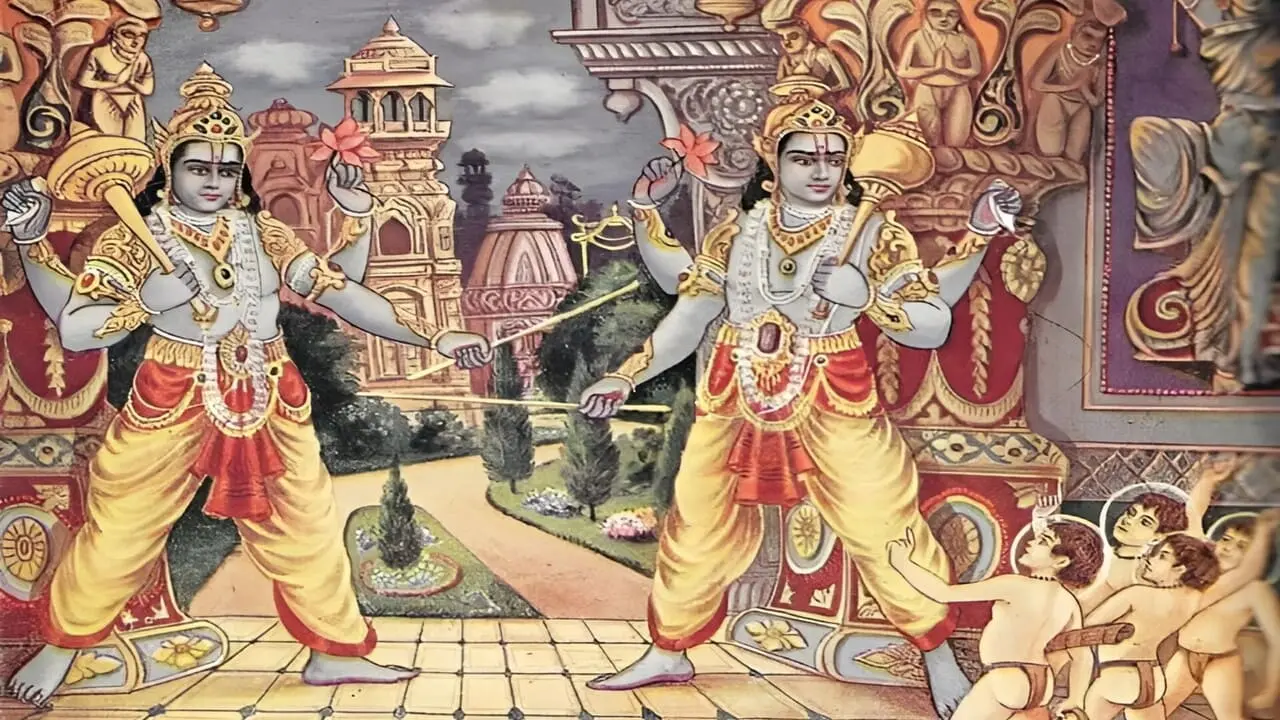Dashavatara : Connection With The Darwin’s Theory
In Hindu scriptures, the Dashavatara represent the ten avatars of Lord Vishnu, showcasing cosmic balance and the circle of life. These avatars, believed to restore harmony in the world, also offer insight into humanity’s journey. From underwater beginnings to the awaited Kalki, each avatar unfolds a distinct tale mirroring the Darwin’s theory of human evolution.
The 10 Avatars of Vishnu : Dashavatara
Delve into the mystic realm of the Dashavatara, each avatar representing a stage in human evolution, from aquatic origins to prophesied enlightenment.
1. Matsya (The Fish)
Lord Vishnu takes the form of Matsya to save the ancient scriptures (Vedas) and the sage Manu from a great deluge. He guides a boat, carrying the sage, various seeds, and animals, to safety. This myth aligns with the emergence of life in water and symbolizes the preservation of knowledge and life during the early stages of human development.
2. Kurma (The Tortoise)
Kurma is the tortoise that supports Mount Mandara during the churning of the ocean (Samudra Manthan) to obtain the nectar of immortality (Amrita). This symbolizes stability and the need for a strong foundation. In the context of human evolution, it represents the establishment of basic societal structures and communities.
3. Varaha (The Boar)
Varaha descends to rescue the Earth goddess, Bhudevi, from the demon Hiranyaksha, who had submerged her in the cosmic ocean. This myth reflects the struggle for survival and the journey towards mastering the terrestrial domain – a metaphor for humans adapting to life on land.
4. Narasimha (Half Lion - Half Man)
Lord Vishnu takes the form of Narasimha to defeat the demon Hiranyakashipu, who had gained a boon of invincibility against man or beast. Narasimha represents the transition from animalistic tendencies to human intelligence, reflecting the development of human intellect and the ability to reason.
5. Vamana (The Dwarf)
Vamana, a dwarf Brahmin, requests three paces of land from the demon king Bali. Vamana then expands to cover the entire universe in three steps, symbolizing the rise of intellect and cunning. This correlates with the growth of early civilizations and the emergence of strategic thinking.
6. Parashurama (The Warrior Sage)
Parashurama, the Warrior with an Axe Avatar, corresponds to the advent of conflict and warfare. As societies expanded and interacted, conflicts arose over resources and territories. This stage represents the struggle for dominance and the need for societal order.
Parashurama, a Brahmin warrior, emerges to rid the world of corrupt and oppressive Kshatriya rulers. His avatar signifies the advent of conflict and warfare as societies expanded and interacted, highlighting the struggle for dominance and societal order.
7. Rama (The Perfect King)
Sri Rama, the son of King Dasharatha, wed Janaka Maharaja’s daughter, Sita. When the demon Ravana abducted Sita, Sri Rama vanquished him in battle. Their lives serve as an exemplar for societal conduct, emphasizing respect for parents, relatives, teachers, friends, and even adversaries. Sri Rama, known as Maryada Purushottam, exemplifies monogamy and monoandry.
8. Balarama (The Farmer)
Balarama, plays a pivotal role in Hindu texts as a symbol of strength, protection, and agricultural prosperity. He defeats demons, purifies rivers, participates in divine dances, and mentors heroes in the Mahabharata, embodying essential virtues and contributing significantly to the narrative’s richness.
9. Krishna (The King Maker)
Krishna, a central figure in the Mahabharata and the Bhagavad Gita, is known for his wisdom and playful nature. His avatar signifies the importance of spiritual wisdom and the pursuit of inner knowledge, reflecting a shift from material pursuits to spiritual enlightenment as humanity evolves.
10. Kalki (The Horseman)
Kalki is a future avatar yet to manifest. According to prophecies, Kalki will appear riding a white horse, wielding a sword, to bring an end to the present age of darkness and corruption (Kali Yuga). This avatar represents the ultimate evolution of humanity, symbolizing a transformative shift towards a higher state of consciousness and unity.
Conclusion
The Dashavatara, when viewed through the lens of human evolution, offer a fascinating perspective on the journey from primitive beginnings to a prophesied enlightened future. Each avatar serves as a symbolic marker, reflecting the challenges, triumphs, and lessons of different epochs in the evolution of humanity. As we navigate our own paths through time, the stories of the Dashavatara continue to inspire contemplation and reflection on the cyclical nature of existence.



